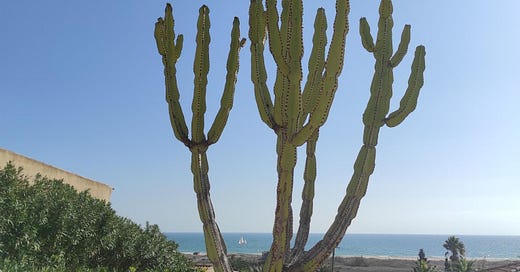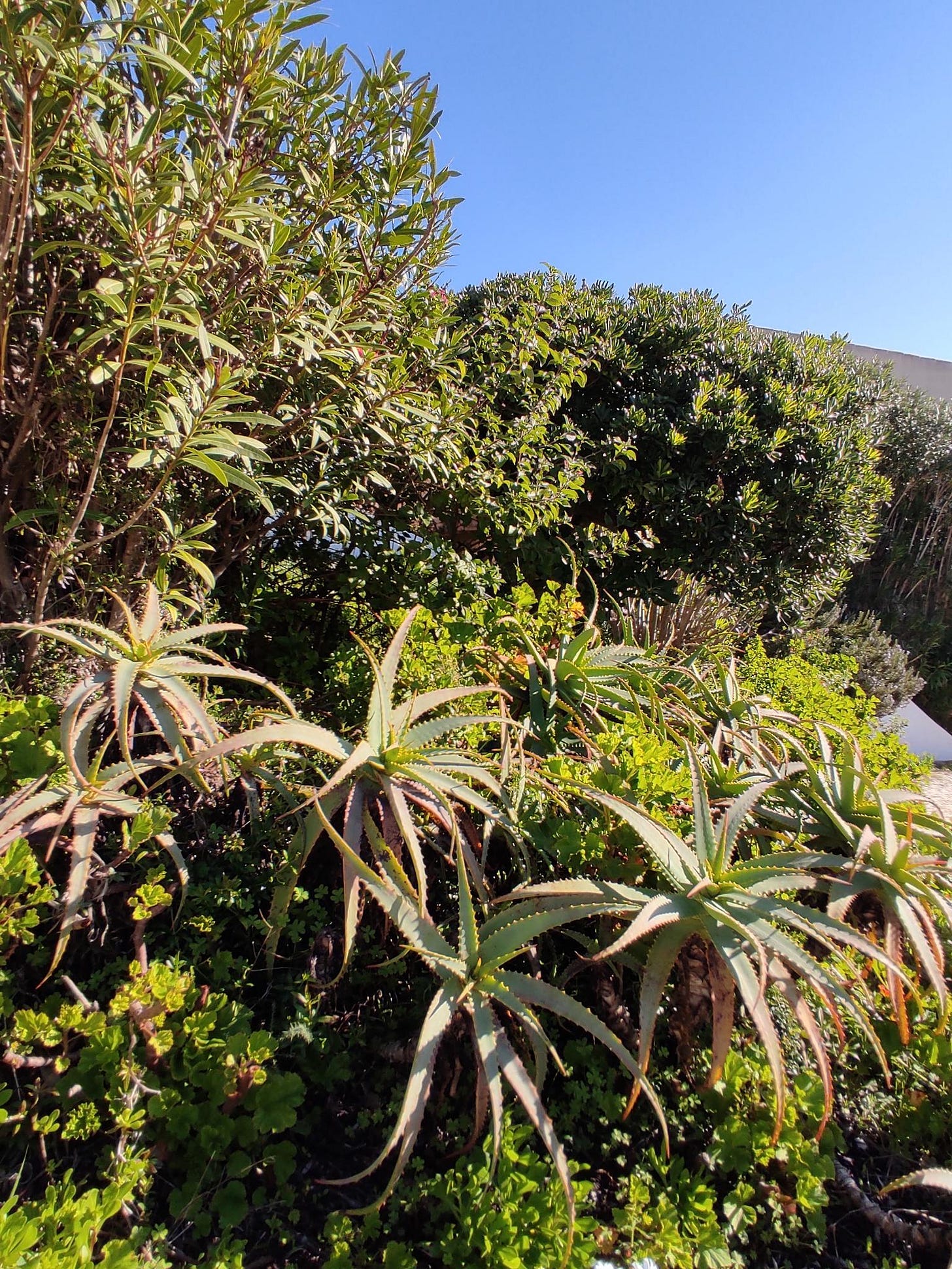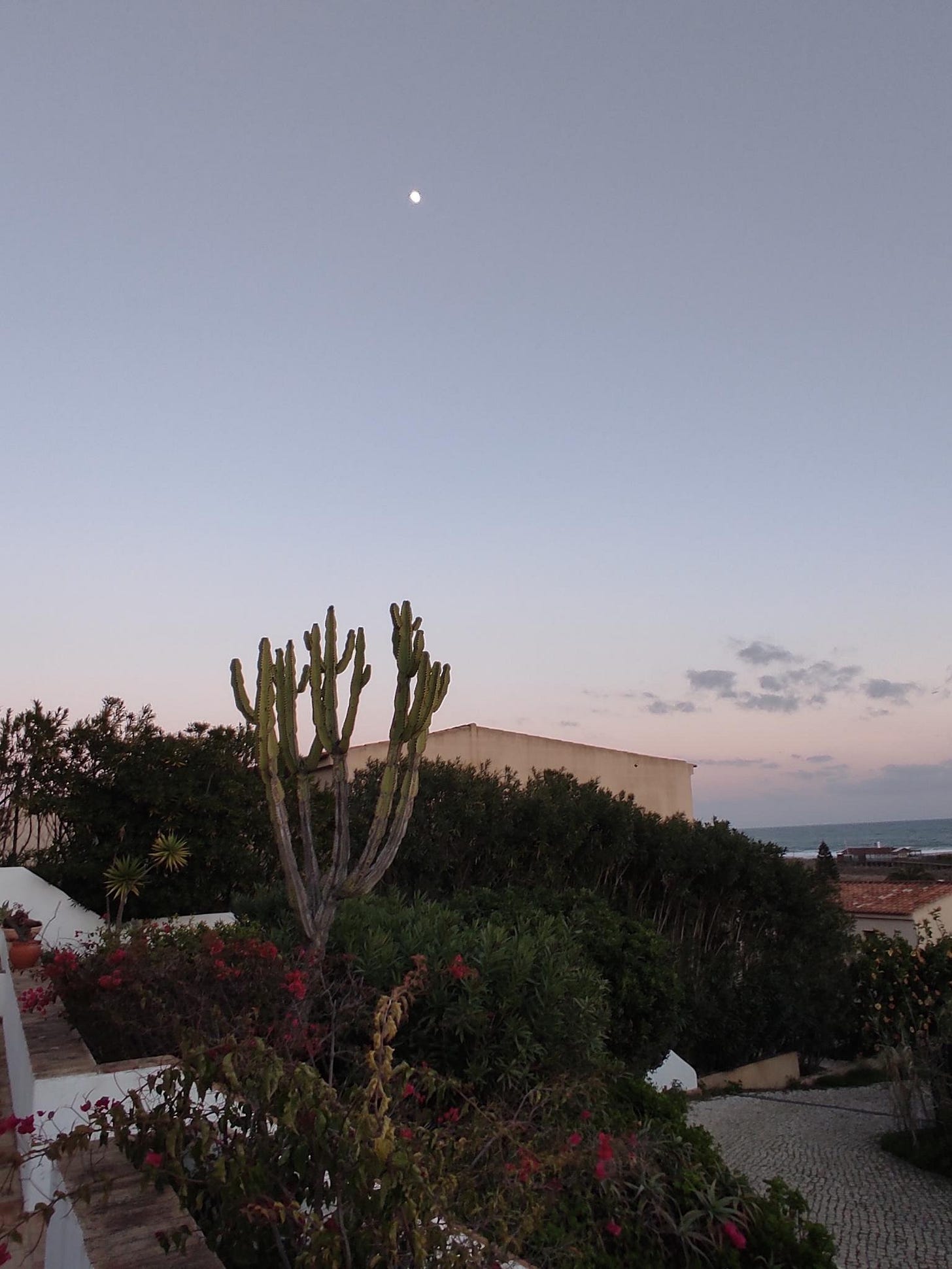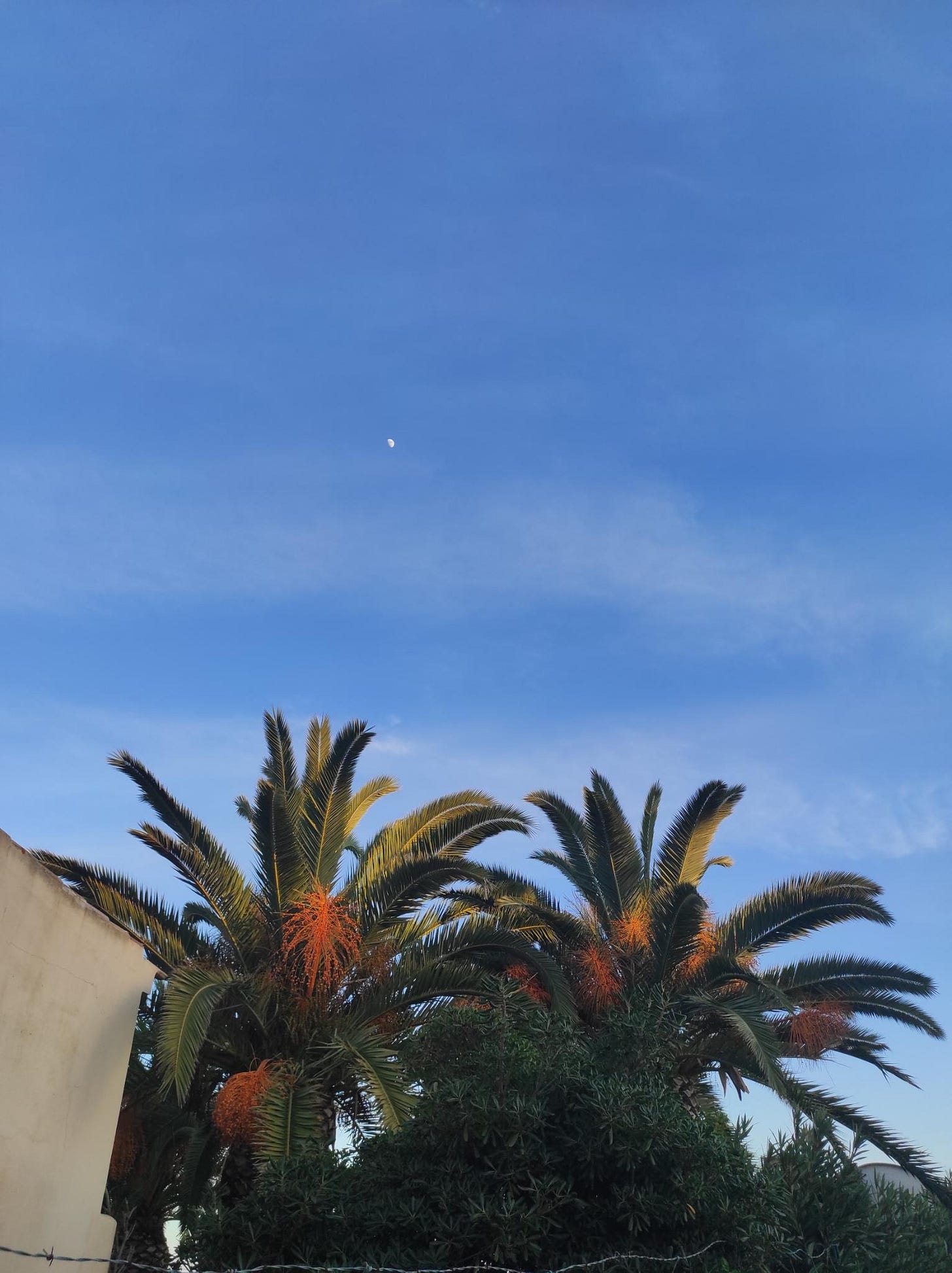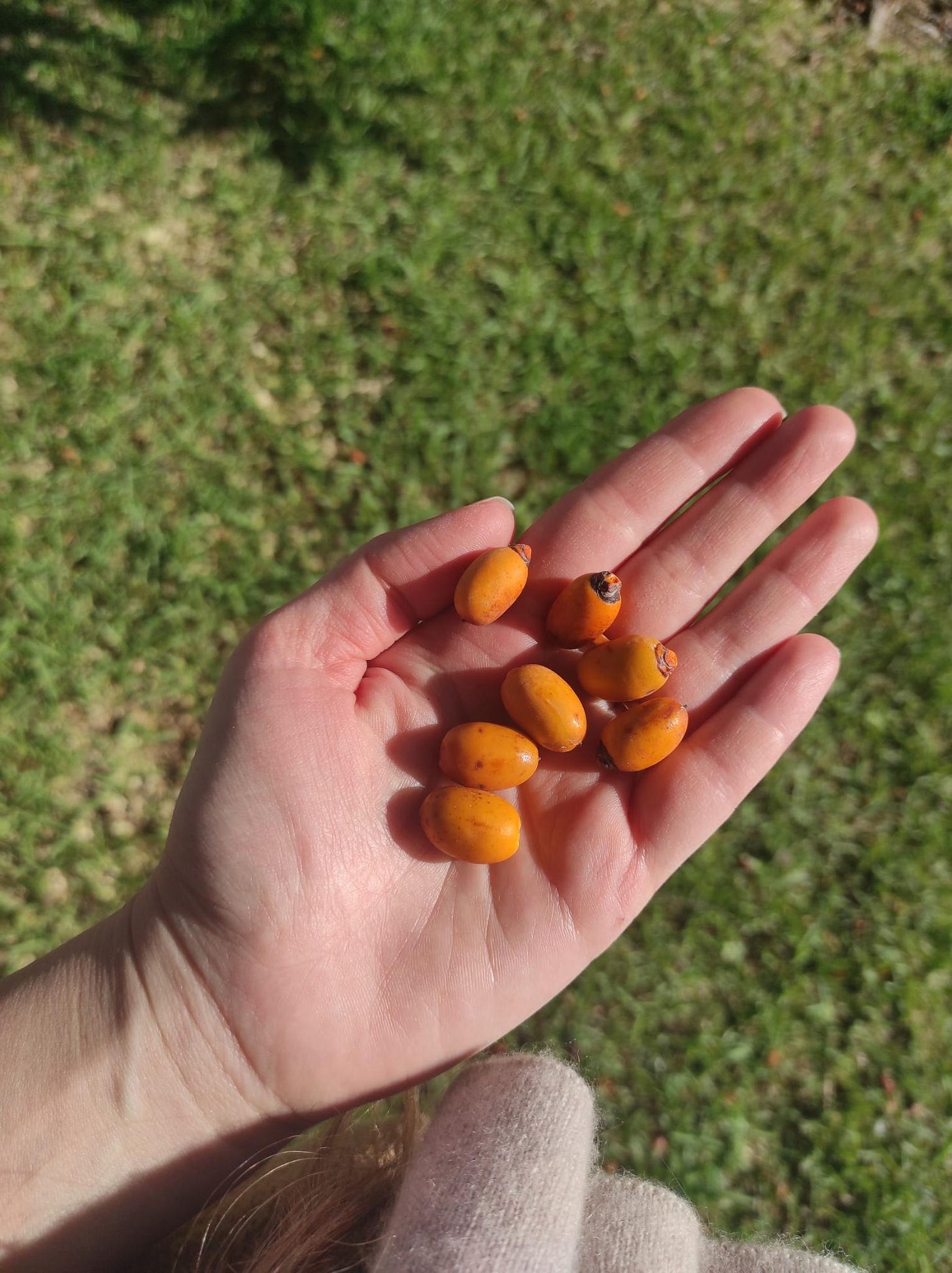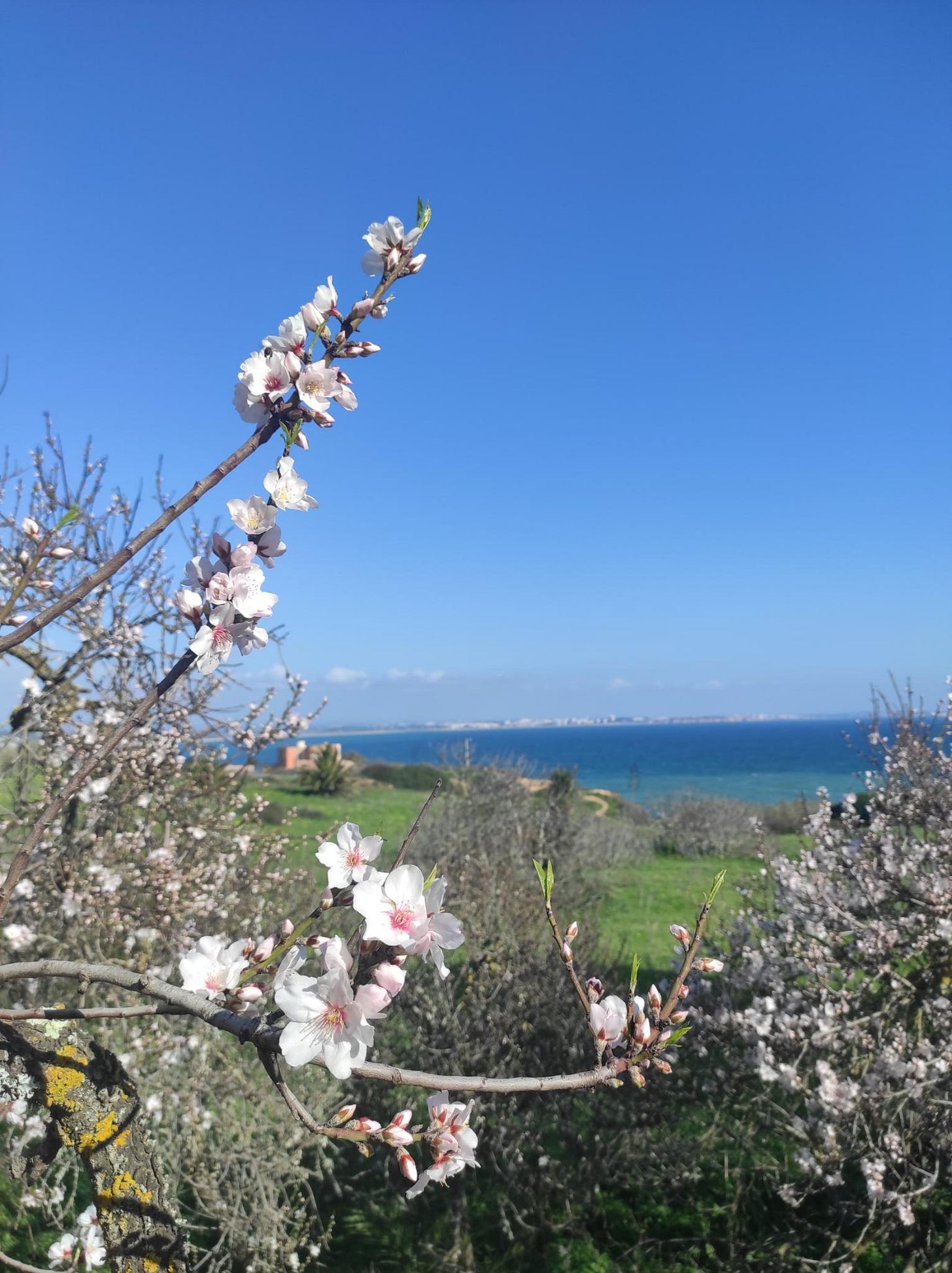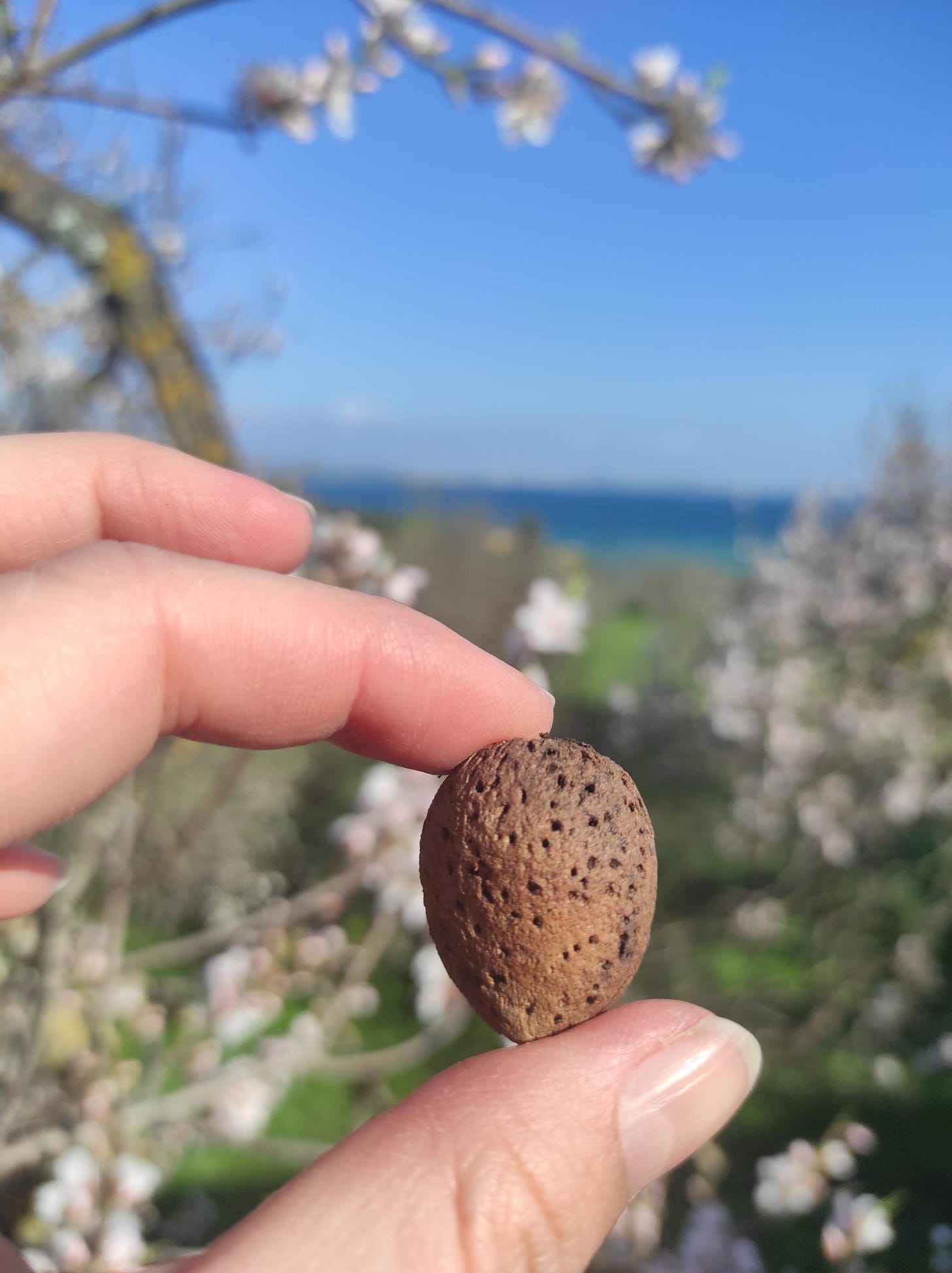13. Euphorbia Euphoria, Dating Palms, and Almond Blossoms
Gossip Amongst Fronds is a free Sunday newsletter. If you love it, consider supporting it financially. For €5/month, you’ll gain access to my sporadic plant advice column, simple seasonal recipe, and occasional podcast where I interview like-minded creatives. Thank you for being here!
Hello everyone! As some of you who follow my instagram already know, I am currently in Lagos, Portugal.
A last minute decision to avoid the winter blues and lockdown of The Netherlands (although I hear the lockdown is slowly lifting!), my father and I headed down here last week - sorry Nico, but we had to bail.
Euphorbia Euphoria
Upon first arriving to our airbnb in Lagos, I commented on the magnificent plant arching its way into every shot of the ocean. What a cacti, I said. My dad inferred that it might actually be a euphorbia instead, and thus the obsession began. Apparently, according to my amateur knowledge of regurgitating what my gardener father says, Euphorbias stem originally from Africa whereas Cacti are from the Americas. But with globalization what is is, variations of both are transient throughout gardens all over. For those unfamiliar with the difference between the two, I found this article helpful, since I am still learning about it all myself.
It requires a magnifying look and patience to discover if certain very cacti-looking plants are indeed cacti or euphorbia. Beauties such as these ones frolicking in the front garden are so clearly just euphorbia (thanks dad):
But this majestic guardian of the villa needed further inspection:
My dad went into the garden, tiptoeing among the plethora of flowering clover to gently trace the dots along the plant, looking for any sense of thorns or blooms.
Yes, that sailboat had great timing. It took googling, close photographs, banter and more examination (on my dad’s part) to seal that the plant is in fact, euphorbia, due to it’s general shape of four ribs and small clusters of not very intimidating short thorns (fangs, as he described it - how wonderful). The best and most concrete way to decipher what category it falls under is to cut into the plant. Euphorbias will have a (toxic) milky sap versus the clear sap from cacti. Since we are guests in this euphorbia’s home, I did not feel it was a good idea to stab them during our stay just to see their blood, so we are sticking with the above evidence as good enough.
Dating Palms
Down a rabbit hole of interiors (one of my preferred genres of interweb intoxication) late last year, I came across the perfect centrepiece in this article. A young date branch, yellow jujubes splayed across the centre of the table, imposing, yet not too much.
By the time I read said article, the ability to purchase a date branch had waned past its season. I found a few discounted online - gotta love The Netherlands’ ability to have a store for everything - but they appeared dismal in comparison to the vibrant branch of the article. I decided to abandon the venture, at least until next season. So when enjoying the view from our airbnb here in Lagos, I noticed date-like jewels hanging from the palms one house over, I was overjoyed!
Unfortunately, these trees were too high and too much on private property for further inspection. However, during our hike yesterday, we strolled along a shorter, perkier date palm eagerly handing out the golden fruit. I gathered a few for evidence and further inspection, much to the surprise of a few Portuguese passerbys. If only these branches were sold at farmers markets instead of greenhouse carnations. If my mother-in-law was here I am sure we would sneak back at night to snag one or two branches, with consent from the tree. Her horticultural alter-ego - with a resume of guerrilla gardening and affiliations with certain quince or other elusive fruit trees on unpick-able property, would come in handy in this situation. Alas, I am not brave nor skilled enough to do so on my own, so I had to admire from afar.
There are many different Phoenix date palms (14 to be specific), and with my lack of expertise I have been stressing over which ones we have been hanging out with on this trip. Upon closer inspection and google squinting, I believe these to be from the edible, yet fairly indulged in, Phoenix canariensis Date Palm. Anyhow, I am no expert so if anyone reading this is, please, educate me, I love dates.
Side note: apparently there are toxic thorns at the base of the Phoenix canariensis fronds so perhaps it is better I did not scale these babies at night in my futile attempt for the perfect table accessory.
Almond Blossoms
During our hike yesterday we came across a patch of blossoming trees. At first glance they appeared to be cherry blossoms and we leaned in taking photographs, marvelling at the first signs of spring in January. Then we noticed dried, blackened bits and bobs floating amongst the scented blooms. Upon some strategic reaching and bending, I found myself holding an almond. It was ripened by the past few seasons and no longer edible, fossilised by the flavours of the seaside air. Almond trees always remind me of Gabriel García Márquez’s Love in the Time of Cholera, my favourite book growing up. In his novel, it is the bitter almond tree and their underbelly of cyanide that haunt the tormented love story of Florentino and Fermina. Instead, these were sweet almonds, honeying the atmosphere and unfolding delicate branches as offerings, but still nostalgic in their demeanour.
These almond trees were growing in an abandoned lot, one that will probably one day be paved into a resort built for the Northerners flocking to warmer pastures, such as myself. But for now, they were there reminding us of spring, with their sweet scents accenting the wind around us and waving to the sea before them.
Some things nourishing me this week:
Sunshine! (don’t hate me) and gratitude for hearing about Lagos through a friend (thank you Antonia! It is gorgeous here, I do not want to leave).
One of my favourite activities when landing in a new town is to check out the local markets and buy one of every type of produce that is unfamiliar or difficult to find back home. Here are my findings, amongst a few regulars:
The periwinkle sky at dawn and dusk, witnessing it is better than any meditation I have ever tried.
Waking up with the sun and being able to do yoga outside with only the birds as company, slightly crooked picture as evidence of my morning blissful trance:
Wishing you all a great week and hopefully some sunshine where you are. What greenery is everyone cultivating or cuddling to stave off the winter blues? Happy Sunday and Happy Full Moon tomorrow! See you next week!
Enjoyed this article? Share it with someone else you think will enjoy it as well!
Haven’t subscribed yet? Subscribe below <3

